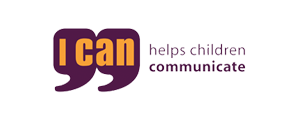Stammering assessment
A stammering assessment is used by speech and language therapists to assess your child’s stammer and the behaviours and components associated with it. A stammering assessment is usually quite comprehensive and includes interviews, case histories and assessment of fluency, speech, language and communication skills.
Speech and language therapists work with children and their family members to help them manage their stammer. Our speech and language therapists will work with you and your child to create a therapy programme by looking holistically at your child’s stammer and their feelings towards it, to find the most suitable approach to therapy.
Benefits of a stammering assessment
- Identification of risk factors that may influence the child’s stammer.
- Identification of secondary behaviours associated with the child’s stammer.
- Information gained from the assessment will aid the speech and language therapist to create a therapy programme that is best suited to the child’s needs.
Find out more…
What will the stammering assessment assess?
A stammering assessment is often very detailed and covers a range of areas. Speech and language therapists take a holistic approach when assessing a stammer. When assessing a stammer our speech and language therapists abide by the guidelines set by the Royal College of Speech and Language Therapists. The guidelines suggest the considering the following when assessing a child with a stammer:
Consideration of communication abilities in a range of contexts
Speech and language therapists may take a sample of your child’s language in a range of settings and situations for example at home, in clinic, talking to family or friends, talking in front of a group, talking in a new setting.
Consideration of the child’s speech, language and communication needs
The speech and language therapist will assess your child’s speech, understanding of language, expressive language, and social communication skills to identify if there are and difficulties present that may be impacting upon their stammer.
Include quantifiable measures in evaluation
For example, frequency, severity, speech rate, and associated behaviours. The speech and language therapist will include an assessment of your child’s stammer and its characteristics to establish a measureable score.
Collect a case history
The speech and language therapist will take a detailed case history from the parents or carer of the child to establish any previous medical conditions, information on general development, speech and language development, family history of stuttering or speech and language difficulties. As well as questions about previous speech and language therapy involvement, the child’s experience of it and the outcomes of the therapy.
Include reports of the stammer from the child and parents, carers and teachers
Speech and language therapists will ask questions about when the stammer first occurred, the pattern of which it has appeared since, and the characteristics of the stammer for example prolongations, stops or repetitions. In addition to this therapists may want to know when the stammer increases or decreases. The speech and language therapist may also want to know about the perceptions and feelings you or family members have as well as cultural attitudes towards the stammer. The speech and language therapist may also want to know about the impact of the stammer on the child emotionally, socially and behaviourally.
Consideration of the strength and weaknesses of the child’s lifestyle
The speech and language therapist will ask questions about the child's lifestyle to gather more information on their communication in different environments or during different activities. The therapist will also consider strengths as these can be expanded on to help the child overcome their stammer.
Consideration of the child’s previous therapy experiences and the child's goals of therapy
Speech and language therapist should consider speaking to the child if they understand the difficulty or speak to parents about previous therapy and the impact it had. Also speech and language therapists should ask the child if they are at an age where they can understand and / or parents what goals they want to achieve from this episode of speech and language therapy involvement.
Why is a stammering assessment needed?
Stammering can have a great impact on a child’s life especially if the child is aware of the difficulties they are presenting with. Stammering can impact a child’s behaviour as well as their social and emotional wellbeing. Other aspects such as their education and interest can also be affected. Children who have a stammer may avoid speaking in certain situations as they are aware the situation may make their stammer increase. Children may also avoid saying certain words or talk around the word which can impact their ability to express their thoughts and feelings. Stammering can also have secondary behaviours associated with it such as frustration, or negative reactions. Stammering can affect a child’s activity and participation in everyday activities which can impact their quality of life. An assessment of stammering can help identify the impact of the stammer and by helping the child to manage the stammer, the speech and language therapist can help decrease the impact it has on a child’s life.
Typical conditions that may require a stammering assessment:
Below are some of the conditions the stammering assessment may be used for:
Our speech and language therapists can help children with a range of difficulties and conditions, including children who have not been diagnosed or identified with a specific condition. The stammering assessment will help identify the severity, characteristics, and impact of the stammer on the child’s daily life. Our speech and language therapists can provide therapy to help increase your child’s fluency skills.
What information will I receive following a stammering assessment?
After an assessment our speech and language therapist will provide a summary of the assessment and its results. Following an assessment you can request a report that details the findings of the assessment. The report will also contain information about how the stammer is impacting on your child’s communication and daily activity. The report will also contain a therapy programme and recommendations on how to improve your child’s skills and overall communication.
Treatment following a stammering assessment
Some of the therapy approaches for stammering are listed below:
- Indirect therapy i.e., changing the child’s communicative environment, counselling parents, changing parents communicative style.
- Direct therapy such as speech or stammer modification.
- Changing negative attitudes towards communication.
- Easy onset speech.
- Parent child interaction.
- Breathing exercises.
We offer a wide range of therapy, if you feel that your child could benefit from a certain therapy programme contact our speech and language therapist for more details. Email office@sltforkids.co.uk or call us on 0330 088 2298.
Summary
A stammering assessment is used to identify the characteristics of the stammer and the impact it has on the child. The stammering assessment is suitable for children of all ages.
Our stammering assessment is used to inform your child’s therapy programme. If you would like more information on our assessments please email office@sltforkids.co.uk or call on 0330 088 2298.








